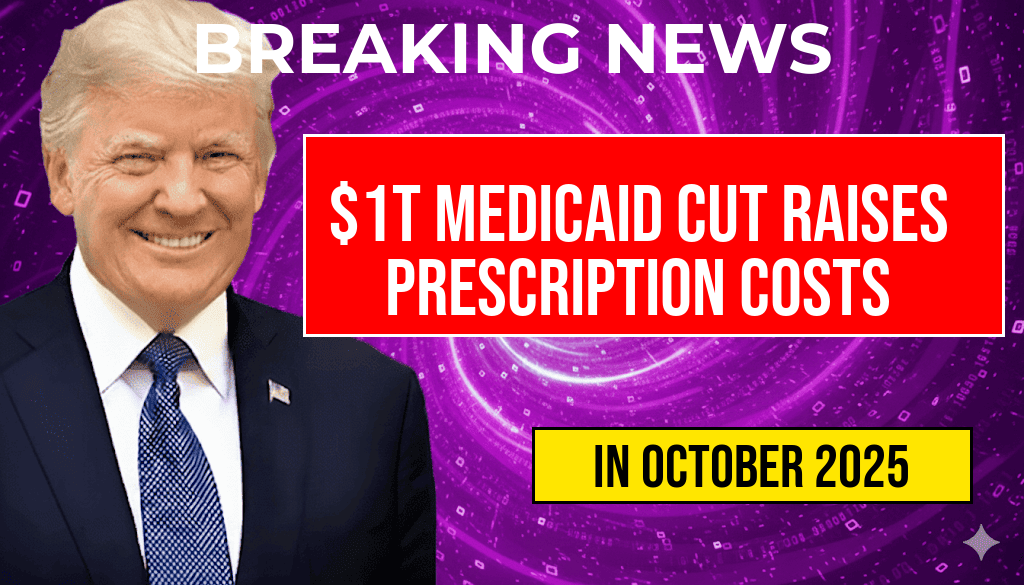A recent report by The Washington Post has revealed that proposed Medicaid budget cuts totaling nearly $1 trillion could have far-reaching consequences for patients relying on affordable prescription medications. The potential reductions threaten to shift the economic landscape of healthcare, especially for individuals needing high-cost drugs such as specialty medications. With the current average retail price of a single prescription reaching around $300 for certain treatments, experts warn that shrinking Medicaid spending could lead to increased out-of-pocket costs and limited access, disproportionately affecting vulnerable populations.
Significant Medicaid Budget Cuts Could Reshape Prescription Drug Access
The proposed cuts, part of broader federal healthcare reforms, aim to reduce overall government expenditures on Medicaid by nearly $1 trillion over the next decade. While policymakers argue that these reductions could curb excessive spending and improve program efficiency, critics contend they risk undermining the affordability and availability of essential medications. The impact of such a large-scale budget reallocation could be especially severe for high-cost treatments, such as biologics and specialty drugs, which often cost patients hundreds or thousands of dollars per course of therapy.
Potential Impact on Patients and Healthcare Providers
Rising Out-of-Pocket Expenses
Medicaid currently subsidizes a significant portion of prescription drug costs for low-income individuals. A sharp decline in federal funding could force state Medicaid programs to reduce coverage or tighten eligibility, leaving many patients to shoulder the full price of their medications. For drugs priced around $300, this could mean an increase in copayments or the need to seek alternative funding sources, which may not always be available.
Access Limitations and Treatment Delays
Reduced Medicaid support may also lead to rationing of high-cost medications, with providers potentially delaying or denying treatments to contain expenses. Such restrictions could result in worsened health outcomes, especially for chronic and life-threatening conditions like cancer, rheumatoid arthritis, and multiple sclerosis, where timely treatment is critical. Healthcare providers warn that limited access to essential medicines could elevate long-term costs due to increased hospitalizations and complications.
Economic and Policy Considerations
| Parameter | Current State | Post-Cut Scenario |
|---|---|---|
| Medicaid Budget | $600 billion annually | Approximately $500 billion annually |
| Average Prescription Cost Covered | $300 | Potentially higher due to coverage reductions |
| Patient Out-of-Pocket Payments | Typically minimal for eligible populations | Likely to increase significantly |
| Access to High-Cost Drugs | Generally available with Medicaid assistance | Potentially restricted or delayed |
Expert Opinions and Industry Response
Healthcare analysts warn that the proposed reductions could destabilize the current balance of Medicaid-funded drug coverage, leading to a rise in uninsured or underinsured individuals seeking care through emergency services instead of preventive treatments. Dr. Emily Carter, a health policy expert at the Harvard T.H. Chan School of Public Health, emphasizes that “reducing Medicaid funding at this scale risks creating a cascade of health disparities, especially among low-income communities.”
Major pharmaceutical companies and advocacy groups have also expressed concern. They warn that such budget cuts could discourage innovation and limit the development of new, costly therapies. Conversely, some policymakers argue that tighter controls are necessary to curb perceived government overspending and improve overall program sustainability.
Implications for Future Healthcare Policy
The debate over Medicaid funding reflects broader tensions between cost containment and ensuring equitable access to healthcare. As lawmakers consider these proposed cuts, experts advocate for strategies that balance fiscal responsibility with patient-centered care, emphasizing the importance of safeguarding access to critical medications. The potential for increased costs and reduced access underscores the need for transparent policy discussions informed by comprehensive economic and health outcome analyses, such as those available from resources like Wikipedia’s Medicaid overview.
Frequently Asked Questions
What is the main concern regarding the $1 trillion Medicaid cut?
The primary concern is that the $1 trillion Medicaid cut could lead to increased costs for patients, including higher prices for prescriptions such as the $300 medication.
How might the Medicaid cut impact access to prescriptions?
The Medicaid cut could reduce coverage and access to essential medications, forcing some patients to pay more out-of-pocket or go without necessary prescriptions.
Why could prescription costs rise due to the Medicaid reduction?
Reducing Medicaid funding may decrease the government’s ability to negotiate drug prices, potentially leading to higher prescription costs for consumers, including expensive medications like the one costing $300.
What are the potential implications for healthcare providers?
Healthcare providers might face increased financial pressure and challenges in delivering affordable care, which could affect patient outcomes and the availability of certain prescriptions.
What can patients do to prepare for possible changes in medication costs?
Patients should stay informed about policy updates, explore assistance programs, and discuss with their healthcare providers about alternative medications or payment options to manage potential increases in costs.






